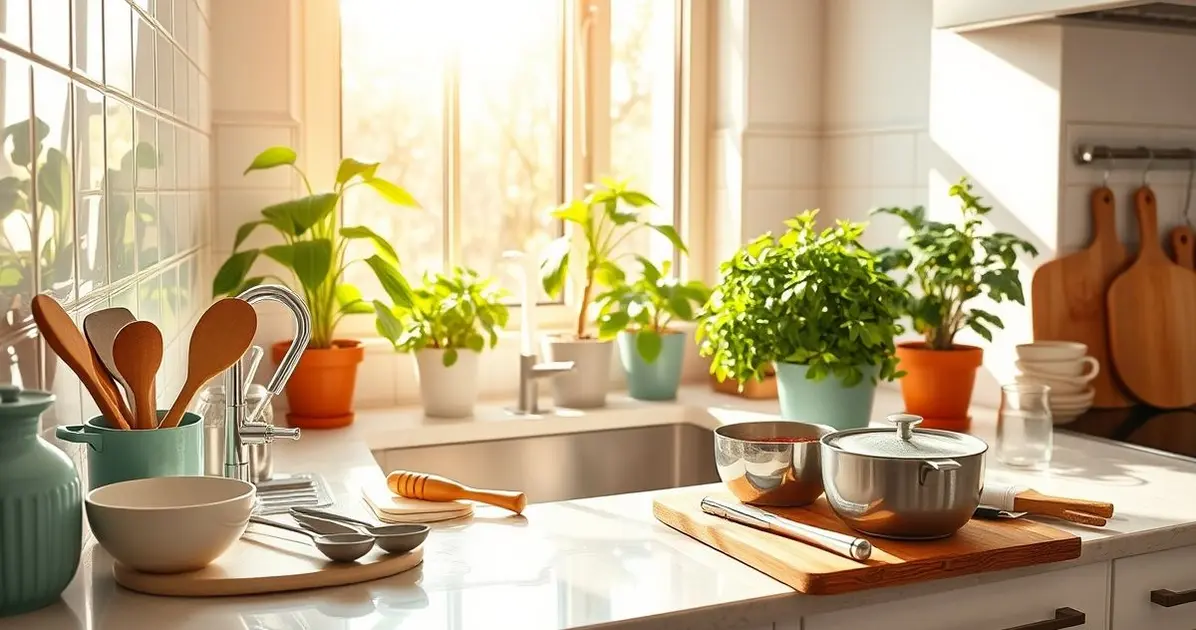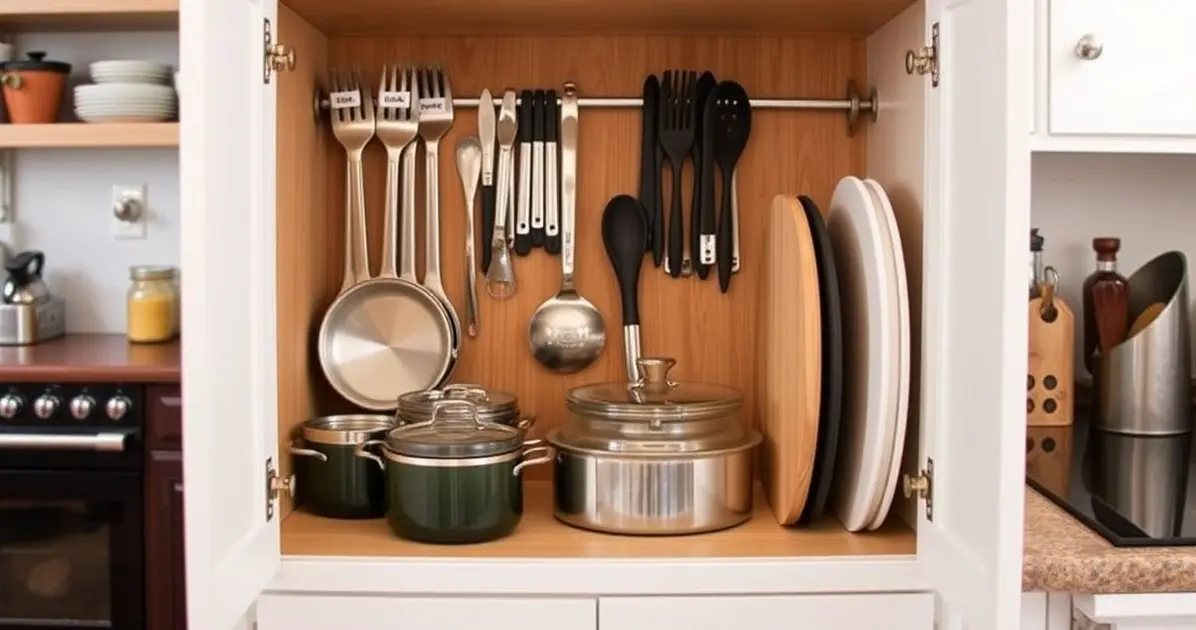This video provides a comprehensive guide on how to effectively clean and store your cooking tools and equipment, ensuring they remain in excellent condition for your culinary adventures.
How to clean and store cooking tools and equipment video

Learn the best practices for cleaning and storing your kitchen tools and equipment in this informative video. From washing to drying and organizing, ensure your cooking essentials are always ready for use!
Effective Techniques for Sanitizing Kitchen Tools
Sanitizing your kitchen tools is a critical step in maintaining a safe and hygienic cooking environment. Here are some effective techniques for sanitizing kitchen tools:
1. Rinse Immediately: After using your kitchen tools, rinse them immediately under warm water to remove food particles. This prevents bacteria from multiplying on dirty surfaces.
2. Use Hot, Soapy Water: Prepare a solution of hot water and mild dish soap. Soak utensils, pots, and pans in this solution for a few minutes to loosen any stuck-on food. Use a non-abrasive sponge to scrub away residues.
3. Disinfect with Vinegar: White vinegar is a natural disinfectant. Mix equal parts vinegar and water in a spray bottle and spray it on your kitchen tools. Allow it to sit for a few minutes before rinsing with clean water. This method effectively kills bacteria and neutralizes odors.
4. Use Bleach Solution for Heavy Sanitization: For deeper sanitization, especially after handling raw meats, use a diluted bleach solution. Mix one tablespoon of unscented bleach with one gallon of water. Soak your tools in this solution for at least 5 minutes, then rinse thoroughly with water to remove any bleach residue.
5. Hydrogen Peroxide: Another effective disinfectant is hydrogen peroxide. Use a 3% solution to spray on your kitchen tools and surfaces. Let it sit for a few minutes before wiping it down with a clean cloth.
6. Sanitize Cutting Boards: For cutting boards, especially those used for raw meats, scrub them with a mixture of baking soda and water, then rinse. Follow up with a vinegar solution for added disinfection.
7. Air Dry or Use Clean Towels: After sanitizing, allow your kitchen tools to air dry completely or dry them with a clean, dry towel. Ensuring they are completely dry helps prevent moisture buildup, which can lead to bacteria growth.
By implementing these effective techniques for sanitizing your kitchen tools, you can create a safe cooking environment that minimizes the risk of foodborne illnesses. Regular sanitation practices are essential for maintaining the hygiene and longevity of your cooking essentials!
Proper Drying Methods for Cooking Equipment
Proper drying methods for cooking equipment are essential in preventing moisture buildup, which can lead to rust, mold, and bacterial growth. Here are some proper drying methods for cooking equipment:
1. Air Drying: After washing your pots, pans, and utensils, place them on a drying rack or a clean dish towel to air dry. Ensure they are positioned in a way that allows air to circulate freely around them, promoting quicker drying.
2. Use a Clean Towel: For quicker drying, use a clean, dry towel to wipe down your cooking equipment after washing. Make sure the towel is free from lint and debris to avoid transferring anything onto your tools.
3. Drying Knives: After washing knives, immediately dry them with a clean towel. Avoid letting them air dry, as moisture can lead to rust on the blades. Store them in a knife block or on a magnetic strip after they are completely dry.
4. Drying Wooden Utensils: Wooden utensils and cutting boards should not be soaked in water for long periods. After washing, wipe them down with a towel and place them upright to air dry. To maintain their condition, consider applying food-safe mineral oil periodically.
5. Avoid Dishwashers for Certain Items: While dishwashers can be convenient, avoid using them for items that require careful drying, such as non-stick cookware and wooden utensils. Hand washing and drying these items are often the best options to preserve their quality.
6. Use a Heat Source (if appropriate): For certain metal items, you can place them on a stove burner set to low heat for a few moments to evaporate any remaining moisture. Be cautious not to overheat or damage the cooking equipment.
7. Check for Hidden Moisture: After drying, inspect your cooking equipment for any hidden moisture in crevices or joints. Use a cloth to ensure all areas are dry before storing them away.
By employing these proper drying methods for your cooking equipment, you can effectively prevent moisture-related issues, prolong the lifespan of your tools, and maintain a safe and hygienic kitchen environment. Regular attention to drying practices is key to keeping your kitchen essentials in top condition!

Best Storage Practices to Maximize Space
Maximizing space in your kitchen while ensuring that your cooking tools and equipment are stored properly is essential for maintaining an efficient cooking environment. Here are some best storage practices to maximize space:
1. Utilize Vertical Space: Make the most of your kitchen’s vertical space by installing shelves or cabinets that reach up to the ceiling. Use the upper shelves for items that are used less frequently, while keeping everyday essentials within easy reach.
2. Drawer Organizers: Invest in drawer organizers to keep utensils, cutlery, and small tools neatly arranged. These dividers help prevent clutter and make it easy to find what you need quickly when cooking.
3. Magnetic Strips: Install magnetic strips on walls or inside cabinet doors to hold knives and metal utensils. This not only saves drawer space but also keeps your tools visible and easily accessible.
4. Hanging Racks: Use hanging racks or pot racks to store pots, pans, and cooking tools. This method frees up cabinet space and allows you to display your cookware as part of your kitchen decor.
5. Clear Storage Containers: Store dry ingredients like flour, sugar, and pasta in clear, labeled containers. This not only keeps your pantry organized but also makes it easy to see when supplies are running low.
6. Lazy Susans: Incorporate lazy Susans in cabinets or on countertops to easily access spices, condiments, or other small items. This rotating storage solution maximizes space and minimizes the need to reach into the back of cabinets.
7. Under-Sink Storage: Use tiered organizers or pull-out bins under the sink to store cleaning supplies and dish soap. This area is often underutilized, and effective organization can keep it tidy and functional.
8. Cabinet Door Storage: Utilize the inside of cabinet doors for additional storage. Install hooks or small racks to hold measuring spoons, pot lids, or spices, making use of often-overlooked space.
9. Stackable Bins: Use stackable bins to store similar items together, such as baking supplies or snacks. This method keeps items organized and allows you to utilize vertical space effectively.
In summary, implementing these best storage practices can significantly enhance the organization and efficiency of your kitchen. By making the most of your available space and keeping your cooking tools easily accessible, you can create a more enjoyable cooking environment that inspires creativity and efficiency in meal preparation.
Enhancing Food Safety and Tool Longevity
Enhancing food safety and tool longevity is crucial for maintaining a healthy kitchen environment and ensuring that your cooking tools last as long as possible. Here are some key practices to achieve both:
1. Regular Cleaning: Consistently cleaning your cooking tools after each use prevents the buildup of bacteria and food residues. This practice is essential for food safety, as it minimizes the risk of cross-contamination and foodborne illnesses.
2. Proper Sanitization: In addition to regular cleaning, sanitizing your kitchen tools is vital, especially after handling raw meats or poultry. Use food-safe sanitizers or natural disinfectants like vinegar to eliminate harmful bacteria and ensure your tools are safe for food preparation.
3. Appropriate Drying Techniques: After washing, ensure that all cooking tools are thoroughly dried to prevent moisture buildup. Moist environments can lead to rust, mold, and bacteria growth, which can compromise both food safety and the integrity of your tools.
4. Safe Storage Practices: Store your cooking tools in a clean, dry area away from heat sources and moisture. Use drawer organizers and racks to keep utensils separate and easily accessible, reducing the risk of damage and wear.
5. Regular Maintenance: Periodically inspect your cooking tools for signs of wear and tear. Sharpen knives as needed, replace any damaged items, and ensure that all equipment is functioning properly. This proactive approach helps extend the lifespan of your tools.
6. Use Quality Materials: Invest in high-quality cooking tools made from durable materials. Stainless steel, high-carbon stainless steel, and food-grade silicone are excellent choices that resist wear and tear, contributing to both longevity and safety.
7. Educate Yourself and Others: Understanding best practices for food safety and tool maintenance is essential. Educate yourself and your kitchen staff about proper cleaning, sanitizing, and storage techniques to foster a culture of safety and care.
8. Keep Up with Food Safety Guidelines: Stay informed about food safety regulations and guidelines. Following these standards not only enhances food safety but also ensures that your kitchen practices are compliant with health codes.
By implementing these strategies for enhancing food safety and tool longevity, you can create a healthier cooking environment and prolong the life of your cooking tools. This commitment to safety and maintenance ultimately leads to a more enjoyable and efficient cooking experience!
Conclusion
In conclusion, maintaining a clean and organized kitchen is essential for ensuring both food safety and the longevity of your cooking tools and equipment.
By following effective cleaning techniques, utilizing safe and natural cleaning agents, and implementing proper drying methods, you can create a hygienic cooking environment that promotes health and safety.
Additionally, employing smart storage solutions enhances the functionality of your kitchen, making it easier to access your tools and ingredients while maximizing space.
Regular maintenance and proper organization are key to prolonging the life of your cooking essentials.
By prioritizing these practices, whether you are an amateur cook or a seasoned chef, you can elevate your cooking experience, ensure food safety, and keep your kitchen tools in top condition.
Embrace these strategies to create a sparkling clean, efficient, and enjoyable cooking space!
FAQ – Frequently Asked Questions about Cleaning and Storing Cooking Tools
Bakit mahalaga ang tamang paglilinis at pag-iimbak ng mga kagamitan sa pagluluto?
Mahalaga ang tamang paglilinis at pag-iimbak upang mapanatili ang kaligtasan ng pagkain, maiwasan ang bakterya, at pahabain ang buhay ng mga kagamitan.
Ano ang mga ligtas at natural na paraan ng paglilinis ng mga cooking tools?
Ang mga ligtas at natural na paraan ay kinabibilangan ng paggamit ng suka, baking soda, at lemon juice bilang mga disinfectant at cleaning agents.
Paano dapat itago ang mga kutsilyo at kawali?
Dapat itago ang mga kutsilyo sa knife block o magnetic strip at ang mga kawali sa isang maayos na paraan, gamit ang mga separator o liners.
Gaano kadalas dapat linisin ang mga kagamitan sa pagluluto?
Dapat linisin ang mga kagamitan pagkatapos gamitin, at isagawa ang mas malalim na paglilinis nang lingguhan at buwanan.
Ano ang mga tips para sa tamang pag-iimbak ng mga cooking tools?
Siguraduhing tuyo ang mga kagamitan bago itago, gumamit ng tamang storage solutions, at regular na suriin ang mga ito para sa wear and tear.
Paano ko mapapanatiling malinis at maayos ang aking kusina?
Magsagawa ng regular na paglilinis, gumamit ng mga ligtas na cleaning agents, at sanayin ang lahat ng staff sa tamang mga pamamaraan ng paglilinis.
See more
Discover plenty of easy and delicious recipes you can make at home, from hearty dinners to indulgent desserts and wholesome breakfasts.




